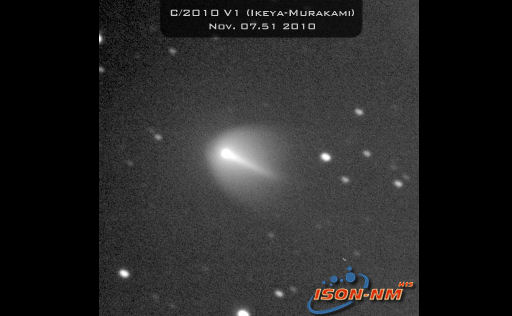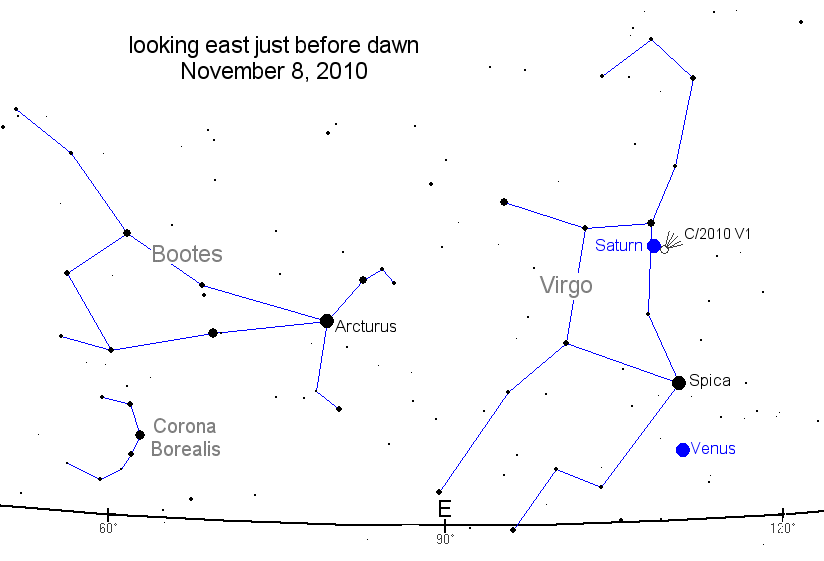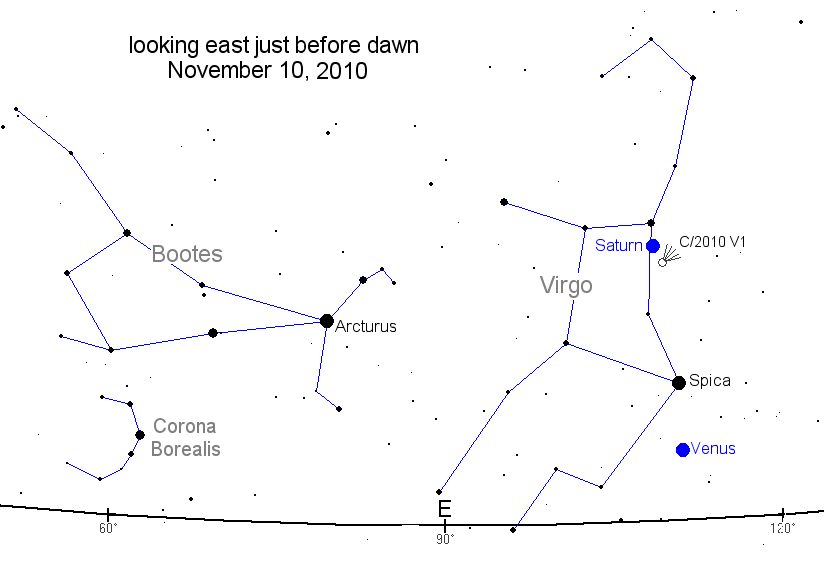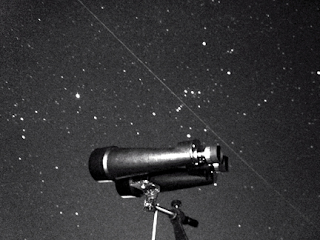ASTRONOMICAL EVENTS FOR JULY 2010
JULY 1: Moon at apogee (farthest from Earth) at 10h UT (distance 405,036 km; angular size 29.8').
JULY 3: Moon near Jupiter (morning sky) at 20h UT. Mag. -2.5.
JULY 4: Last Quarter Moon at 14:35 UT.
JULY 6: Earth at Aphelion (farthest from Sun) at 11h UT. The Sun- Earth distance is 1.01670 a.u. or about 152.1 million km. • Earth at Aphelion (SpaceWeather.com) • Photographic Size Comparison (Anthony Ayiomamitis)
JULY 8: Moon near Pleiades (morning sky) at 6h UT.
JULY 9: Moon near Aldebaran (morning sky) at 2h UT.
JULY 10: Venus 1.0° NNE of Regulus (evening sky) at 12h UT. Mags. -4.1 and 1.4.
JULY 11: Total Solar Eclipse visible from South Pacific Ocean. Path of totality includes parts of the Cook Islands, Tahiti, Tuamotu Archipelago, Easter Island, and southern Chile and Argentina. Greatest totality (5m 20s) occurs in open ocean at 19:34 UT. • Total Solar Eclipse of 2010 Jul 11 (PDF) (NASA)• Eclipses During 2010 (NASA)
JULY 11: New Moon at 19:40 UT. Start of lunation 1083. • Lunation Number (Wikipedia)
JULY 13: Moon at perigee (closest to Earth) at 11h UT (361,115 km; 32.1').
JULY 14: Moon near Regulus (evening sky) at 13h UT.
JULY 14: Moon near Venus (evening sky) at 22h UT. Mag. -4.1.
JULY 16: Moon near Mars (evening sky) at 0h UT. Mag. +1.4.
JULY 16: Moon near Saturn (evening sky) at 14h UT. Mag. +1.1.
JULY 18: Moon near Spica (evening sky) at 6h UT.
JULY 18: First Quarter Moon at 10:11 UT.
JULY 21: Moon near Antares (evening sky) at 20h UT.
JULY 26: Full Moon at 1:37 UT. • Full Moon Names (Wikipedia)
JULY 27: Mercury 0.3° SSW of Regulus (25° from Sun, evening sky) at 22h UT. Mags. +0.1 and +1.3.
JULY 29: Moon at apogee (farthest from Earth) at 0h UT (distance 405,955 km; angular size 29.3').
JULY 31: Moon near Jupiter (morning sky) at 2h UT. Mag. -2.7.
JULY 31: Mars 1.8° SSW of Saturn (evening sky) at 6h UT. Mags. +1.5 and +1.1.
All times Universal Time (UT). USA Eastern Standard Time = UT - 5 hours.
Prepared By Rahul Zota



















